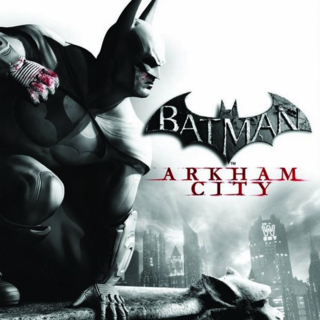Arkham City takes the elements that made its predecessor a refined success and stretches them into a grand scope
Arkham City, like its predecessor, opens in impressive interactive cinematic fashion. Bruce Wayne finds himself being detained by Gotham's S.W.A.T whilst giving a political speech. Wayne's political career, primarily driven by the desire to shut down a notorious sector in Gotham known as Arkham City, comes to a screeching halt. Being the well-trained combatant that he is, Wayne makes it out and sets his focus on figuring out how Dr. Hugo Strange has manipulated authorities into imprisoning him. All the while Batman encounters his arch-rival The Joker, Penguin, and many more, including a few pleasant surprises. It may be argued that Arkham City tosses too many villains into the game's main plot and several sub-plots, but Rocksteady have utilized Batman's foes unique characteristics and weaved their devious, scheming ways into the gameplay quite successfully.
Side-quests and secrets abound in Arkham City, and Batman, using his detective mode and spiffy gadgets can scour out all of the clues to make the rummaged city safer. Whether it be collecting the hundreds of tricky-to-obtain Riddler trophies, investigating a bullet shot that killed a political prisoner, traveling across the city to answer a pay phone before an insane killer takes out innocent victims in a sick game, or finding and destroying chemical tanks that the notorious Bane wishes to use to his advantage, among many others, the Batman universe comes to life with all its personality.
Traversing the vast city, Batman is able to grapple onto sides of buildings and glide long distances, traveling at speeds that would make Spidey envious. Arkham City's emphasis on exploration stands in stark contrast to its predecessor's focus on stealth. That element is not completely left out here, however. Conversely, some truly great sneak missions are found. Batman can once again hide on the top of gargoyle statues, ventilation shafts, and underneath the floors. Sneaking up behind an enemy, popping up from the floor, or swooping down from great heights to perform silent take downs is satisfying, and taking out a room of armed enemies without being detected, even more so.
The plot itself is contrived in a way that Batman must often cooperate with his foes, making the storyline one where good and evil meet in a murky grey area. Followers or thugs of the main villains are always vigilante, however, and they run rampant in Arkham City. Thankfully Bruce Wayne is a certified butt kicker.
The intense, enjoyable combat feels like a glorified button masher in the early stages of the game, but as Batman gains experience points, you can choose to upgrade his combat skills, armor, gadgets, or equip teach him new combat combos. Running into a group of bad guys is a joy thanks to the intuitive, flourishing fighting. It does not get old. Boss battles are also quite inventive, but ultimately light on difficulty and not groundbreaking in innovation. The final boss in particular is not only easy, but unexciting; it does not add much new to the two established games in the series but instead feels like a slightly more dramatic battle that has been fought a few times before.
Arkham City is a dark, beautiful game. Snowflakes blanket Arkham City in all its dirty, murky glory. There is a real sense of danger being in the city: thugs warming up over barrels, political prisoners being beaten up on in dark alleyways, graffiti decorated on many buildings, litter strung about everywhere, and Riddler's clues painted all over the city. The character models themselves are some of the best modern interpretations of the franchise's characters, and the evidence that Batman's latest mission is wearing him down is apparent in his physical appearance as the game progresses. The musical score maintains the hollow feel with slow, dark sweeping instrumentation akin to the Nolan trilogy films' soundtracks.
It is one of the most clever games released this generation thanks in part to Batman's nifty gadgets. One moment you are decoding a computer system with a hacking device, then using a zip-line to access a previously unreached area, navigating a remote controlled Batarang through tight spaces until it reaches and hits a security system control panel, spraying explosive gel onto a wall and blowing it up, and much more. Ultimately that is what makes Batman so endearing. It takes full advantage of its features but fleshes them out well, making the game feel like it is constantly giving you something new. You can complete the main campaign and still not be half done. There is an incentive to play through the single player story mode for a second time, but completing all of the side missions, challenge modes, and obtaining the plethora of unlockable content will take dozens and dozens of hours.
Arkham City is the prime example of what a phenomenal sequel should be. It understands its roots but refreshes its formula by pushing its boundaries. The new best superhero game all of all time is no longer Batman: Arkham Asylum. Its sequel, Batman: Arkham City now possesses that crown.

